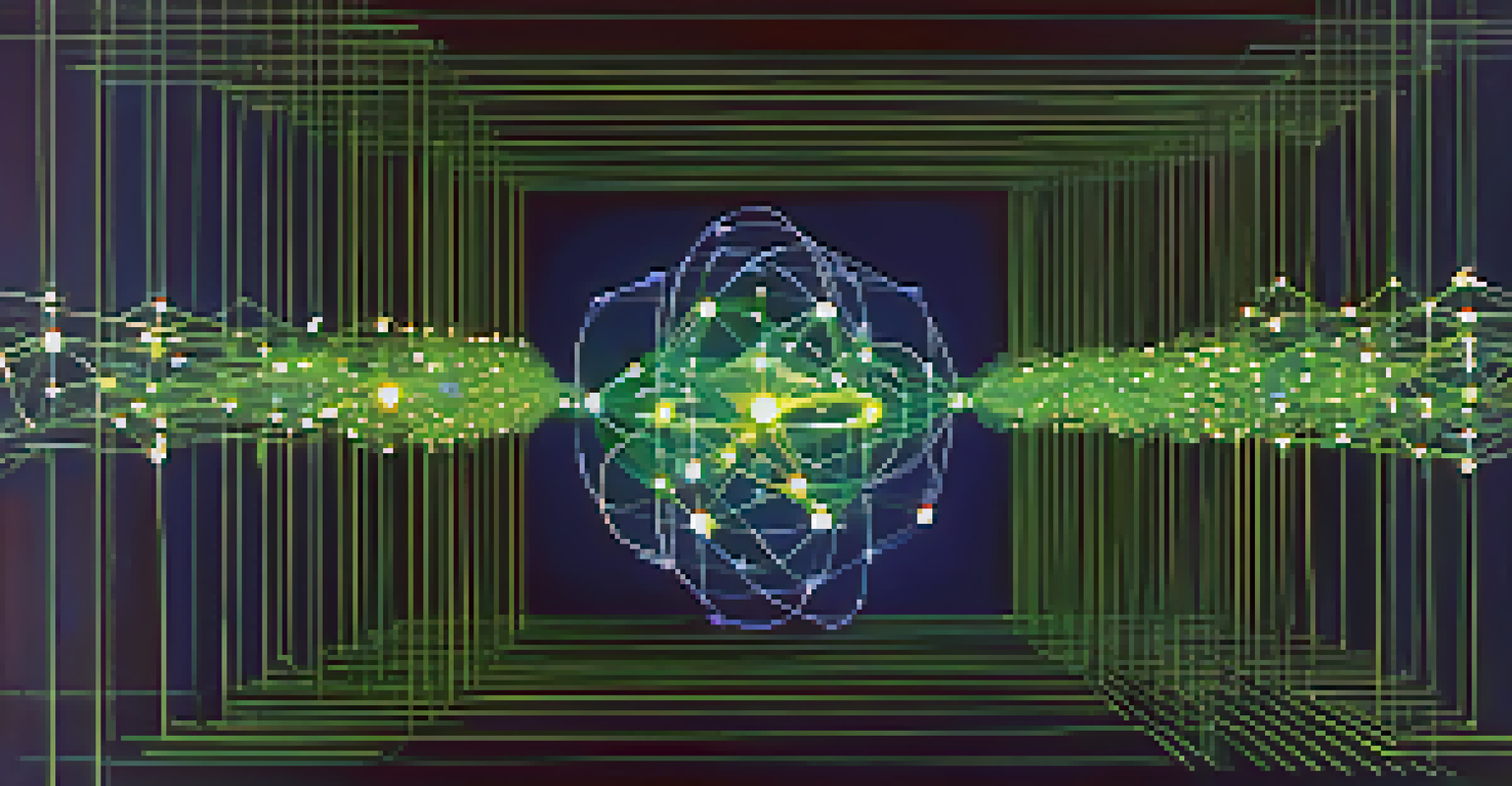The Future of Blockchain Security: Trends to Watch

The Rise of Decentralized Security Protocols in Blockchain
As blockchain technology matures, decentralized security protocols are gaining traction. These protocols distribute security responsibilities across the network, reducing the reliance on central authorities. This shift can enhance security by making it harder for malicious actors to exploit vulnerabilities.
Blockchain technology will only be as secure as the protocols that underpin it.
For instance, decentralized finance (DeFi) platforms are implementing self-sovereign identity solutions that empower users to control their own data. With this approach, even if one part of the system is compromised, the overall security remains intact. Thus, decentralized protocols are becoming a cornerstone of future blockchain security.
Moreover, as more organizations adopt these protocols, we can expect a rise in collaboration among developers and security experts. This collective effort will foster innovation in creating more robust security measures, making decentralized security a trend to watch closely.
AI and Machine Learning's Role in Enhancing Blockchain Security
Artificial intelligence (AI) and machine learning are set to revolutionize how we approach blockchain security. By analyzing vast amounts of data, these technologies can identify patterns and anomalies that may indicate a security threat. This proactive approach allows for quicker responses to potential breaches.

For example, AI algorithms can monitor transaction behaviors in real-time, flagging suspicious activities before they escalate. As cyber threats become increasingly sophisticated, leveraging AI will be crucial in staying ahead of potential attacks. The integration of AI in blockchain security is not just a trend; it’s a necessary evolution.
Decentralized Security Protocols Rise
Decentralized security protocols enhance blockchain security by distributing responsibilities and reducing reliance on central authorities.
Furthermore, machine learning models can continuously improve their detection capabilities over time. With each new threat that emerges, these systems learn and adapt, making them an invaluable asset in the ongoing battle for blockchain security.
The Importance of Regulatory Compliance in Blockchain Security
As blockchain continues to intersect with various industries, regulatory compliance is becoming more critical. Governments and organizations are establishing guidelines to ensure that blockchain applications adhere to legal standards. Compliance not only safeguards users but also enhances the credibility of blockchain solutions.
The future of security lies in collaboration and continuous education.
For example, the General Data Protection Regulation (GDPR) in Europe has forced many blockchain projects to rethink their data privacy strategies. By aligning with such regulations, companies can build trust with their users, who are increasingly concerned about data security. Compliance is not just a hurdle; it’s an opportunity for businesses to demonstrate their commitment to security.
In the future, we can expect more industries to implement specific regulations tailored to blockchain technology. Staying ahead of these changes will be vital for organizations looking to maintain their competitive edge while ensuring robust security measures.
Emerging Threats and Vulnerabilities in Blockchain Systems
As blockchain technology evolves, so do the threats targeting it. Cybercriminals are constantly finding new ways to exploit vulnerabilities, making it essential for organizations to stay vigilant. Understanding these emerging threats is crucial for developing effective security strategies.
Recent incidents have shown that even the most secure blockchain systems are not immune to attacks. For instance, smart contract vulnerabilities can lead to significant financial losses, highlighting the importance of thorough auditing and testing. By staying informed about potential weaknesses, organizations can better prepare themselves against future risks.
AI Enhances Blockchain Security
Artificial intelligence and machine learning are revolutionizing blockchain security by detecting threats in real-time and continuously improving their capabilities.
Moreover, as new technologies like quantum computing develop, they pose unique challenges to blockchain security. Preparing for these threats requires ongoing education and adaptation, ensuring that organizations can safeguard their assets in an ever-changing landscape.
The Role of Cryptographic Advances in Blockchain Security
Cryptography is the backbone of blockchain security, and ongoing advancements in this field are crucial for the technology's future. New cryptographic methods, such as zero-knowledge proofs, are gaining popularity as they allow for secure transactions without revealing sensitive information. This level of privacy is becoming increasingly important as data breaches become more common.
For example, zero-knowledge proofs enable users to prove ownership of a particular asset without exposing the asset itself. This innovation can significantly enhance user privacy and security, making it a trend to watch in the coming years. As more projects adopt these advanced cryptographic techniques, the overall security of blockchain will strengthen.
Additionally, post-quantum cryptography is emerging as a necessary focus area as quantum computing progresses. Preparing for potential quantum threats will be essential for ensuring that blockchain systems remain secure and resilient in the long run.
User Education and Awareness as a Security Measure
While technology plays a vital role in blockchain security, user education is equally important. Many security breaches occur due to human error, such as falling for phishing scams or using weak passwords. By prioritizing user awareness, organizations can significantly enhance their security posture.
For instance, providing training and resources on best security practices can empower users to make informed decisions. Simple measures, like enabling two-factor authentication or recognizing suspicious emails, can dramatically reduce the risk of breaches. When users are well-informed, they become an essential line of defense.
User Education is Key to Security
User education and awareness are crucial for preventing security breaches, as many incidents stem from human error rather than technological flaws.
Furthermore, as blockchain technology becomes more mainstream, the need for comprehensive educational initiatives will grow. Organizations should take it upon themselves to foster a culture of security awareness, ensuring that users understand their role in maintaining the integrity of blockchain systems.
Collaborative Efforts to Strengthen Blockchain Security
Collaboration among blockchain projects, developers, and security experts is crucial for strengthening security measures. By sharing knowledge and resources, organizations can better address common vulnerabilities and threats. This cooperative approach fosters a culture of innovation and resilience within the blockchain community.
For example, initiatives like the Blockchain Security Alliance bring together various stakeholders to share best practices and develop robust security frameworks. Such partnerships can lead to the creation of industry standards that enhance security across the board. Collective efforts are proving to be an effective way to mitigate risks.

As the blockchain ecosystem continues to grow, collaboration will become increasingly important. By working together, organizations can not only protect their own assets but also contribute to a safer environment for all users.